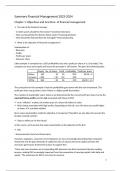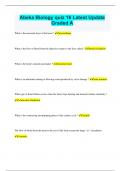Summary
Summary_Financial Management_2023_2024
- Course
- Institution
This is a summary of the course Financial Management, lectured by Marc Deloof in the third bachelor of TEW at the University of Antwerp. It is based on the slides used in the lecture and the lecturer's explanation. Written in December 2023.
[Show more]












